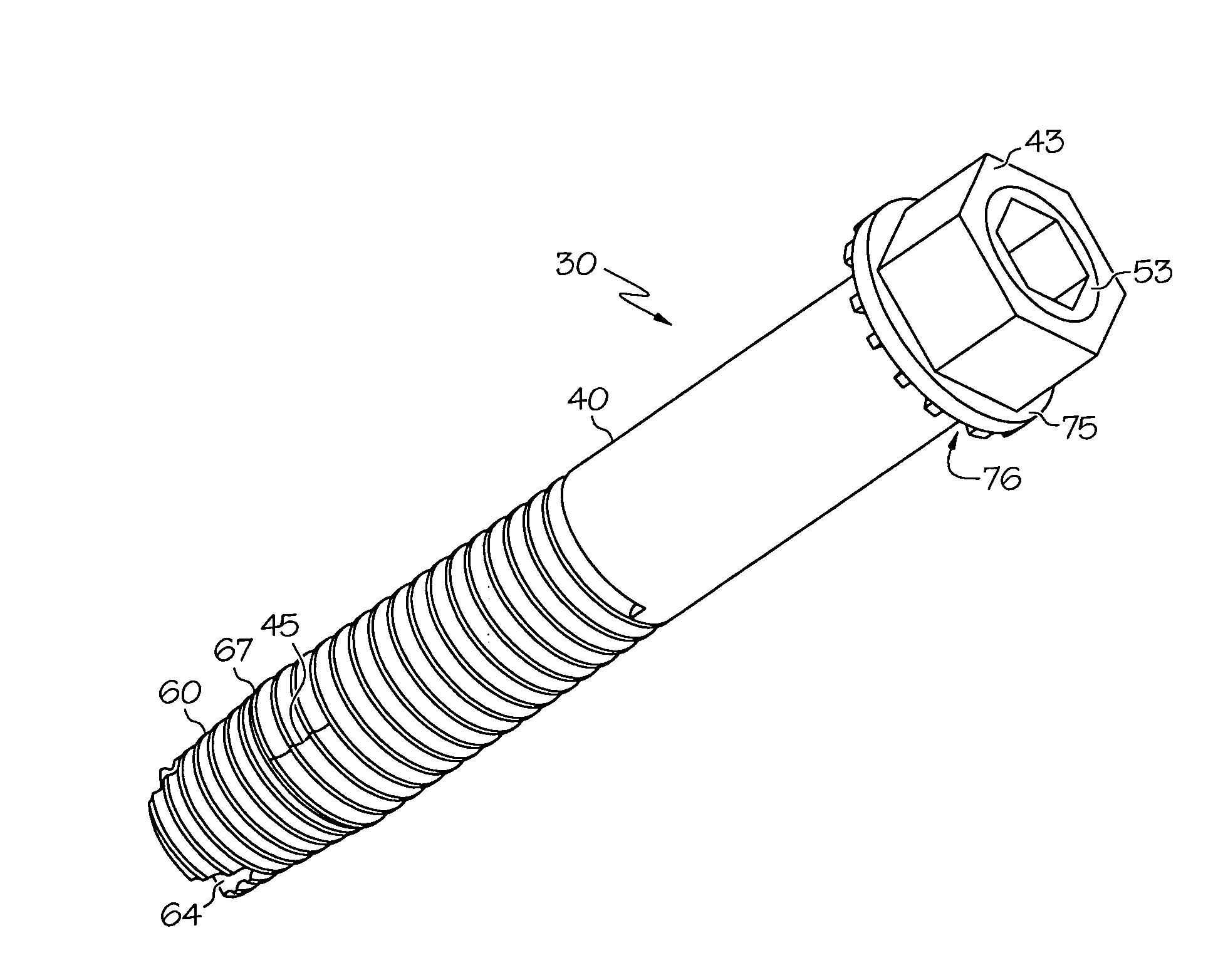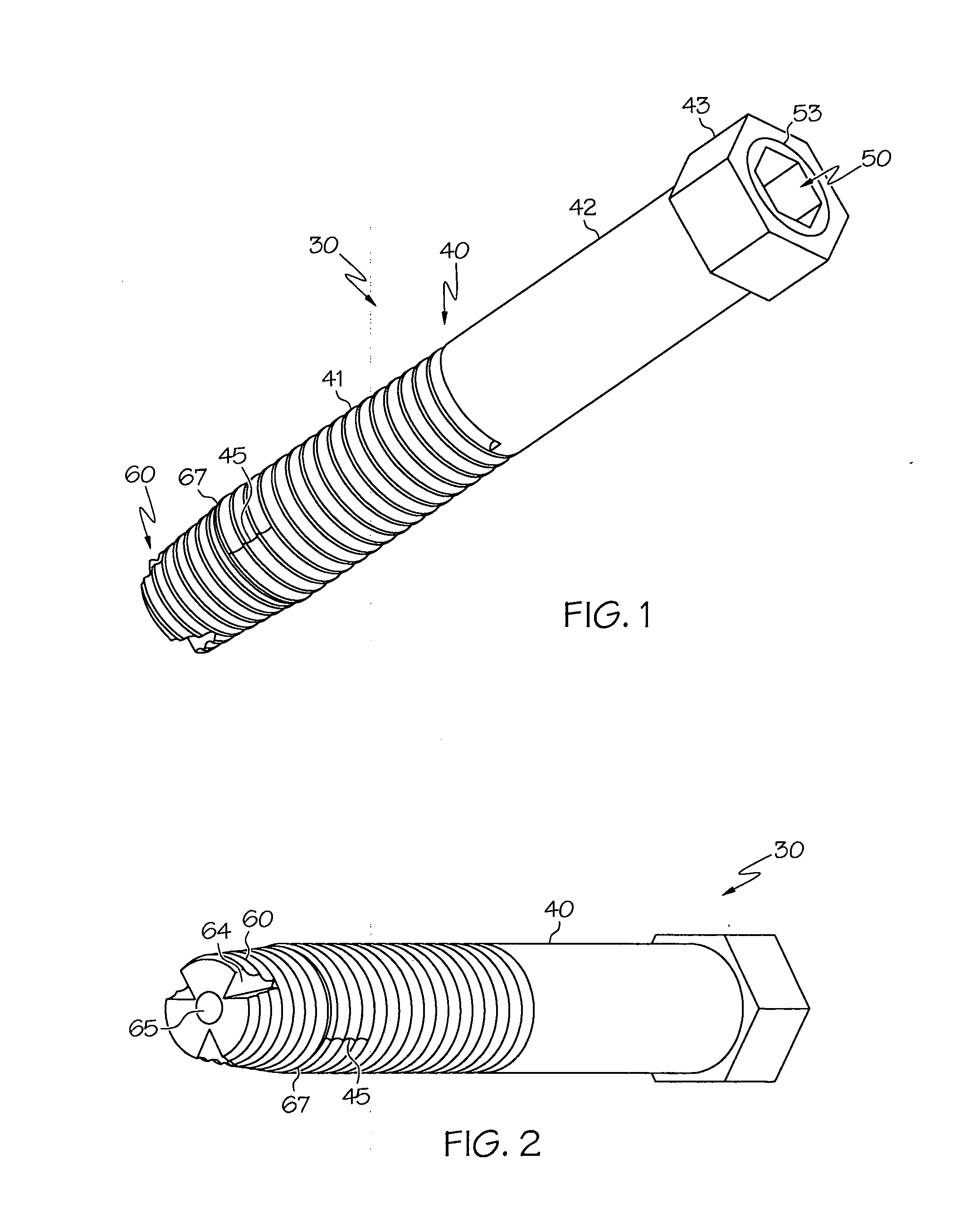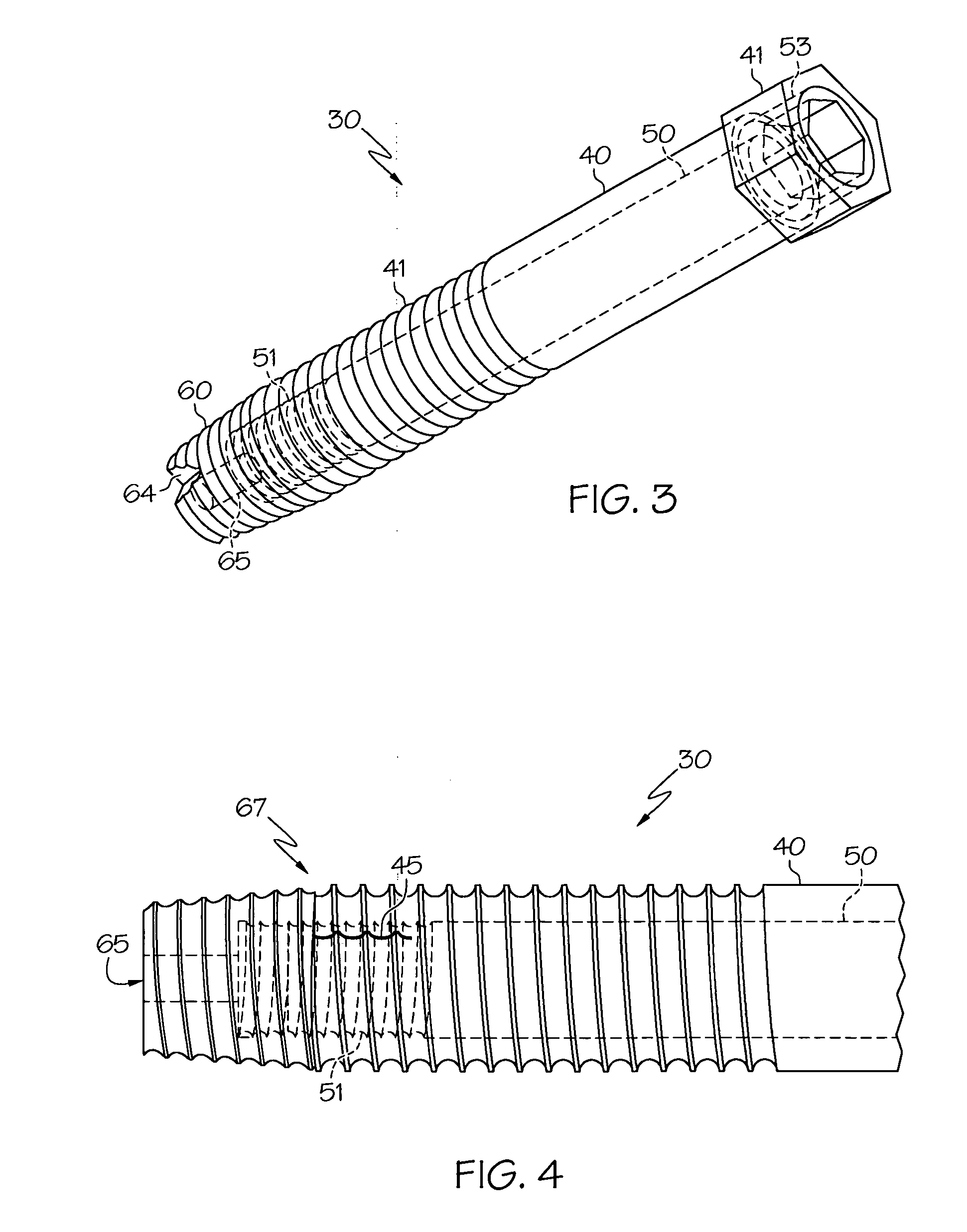Spinal facet fixation device
a fixation device and spine technology, applied in the field of screws, can solve the problems of affecting the healing effect of the spine, etc., and achieve the effect of preventing loosening of the device over time and increasing compression
- Summary
- Abstract
- Description
- Claims
- Application Information
AI Technical Summary
Benefits of technology
Problems solved by technology
Method used
Image
Examples
first embodiment
[0035]Referring generally to FIGS. 1, 2, 3, 4 and 11, there is illustrated a cannulated screw assembly 30. The cannulated screw assembly 30 is composed of an outer shank 40, an inner shank 50, and a tip 60. The tip 60 and a distal portion of the shaft 41 are threaded to such that the device may be inserted into and through two bones. It should be generally understood that while in the following description of a preferred embodiment the screw assembly 30 is described as inserted through two bones, the device may alternatively be inserted into and through two fragments of the same bone or an implantable device and a bone.
[0036]As shown in FIG. 5, the outer shank 40 comprises a head 43, an unthreaded portion 42 proximal to the head 43, and the threaded portion 41 at the distal end of the outer shank 40. The outer shank 40 further includes one or more slits 45 such that the tip 60 can move into the distal end of the outer shank 40 and cause outward deformation at the distal end. The out...
second embodiment
[0044]According to the above described second embodiment, rotation of the inner shank 50 and tip 60 with respect to the outer shank 40 causes the internal threading 49 at the proximal end of the outer shank 40 and the external threading 55 on the proximal end of the inner shank 50 to engage as shown in FIG. 16. The mating of the threads 49 and 55 creates a force that will cause the inner shank 50 and the tip 60 to be drawn up into the distal end of the outer shank 40.
[0045]The outer shank 40 of the second embodiment, like the outer shank 40 of the first embodiment, includes one or more slits 45 to facilitate deformation, and mutually chamfered tip and outer shank surfaces, 47 and 62, which meet at the interface 67 to further facilitate deformation. And similarly, the force associated with drawing the tip 60 up causes the distal end of the outer shank 40 to deform. The embodiment may further include the previously discussed collar 75 with the securing surface 76 for distributing forc...
PUM
 Login to View More
Login to View More Abstract
Description
Claims
Application Information
 Login to View More
Login to View More - R&D
- Intellectual Property
- Life Sciences
- Materials
- Tech Scout
- Unparalleled Data Quality
- Higher Quality Content
- 60% Fewer Hallucinations
Browse by: Latest US Patents, China's latest patents, Technical Efficacy Thesaurus, Application Domain, Technology Topic, Popular Technical Reports.
© 2025 PatSnap. All rights reserved.Legal|Privacy policy|Modern Slavery Act Transparency Statement|Sitemap|About US| Contact US: help@patsnap.com



